
2008 – Winners of the 4th Annual Archie League Medal of Safety Awards, honored on April 1, 2008 at the Crowne Plaza Chicago O’Hare:
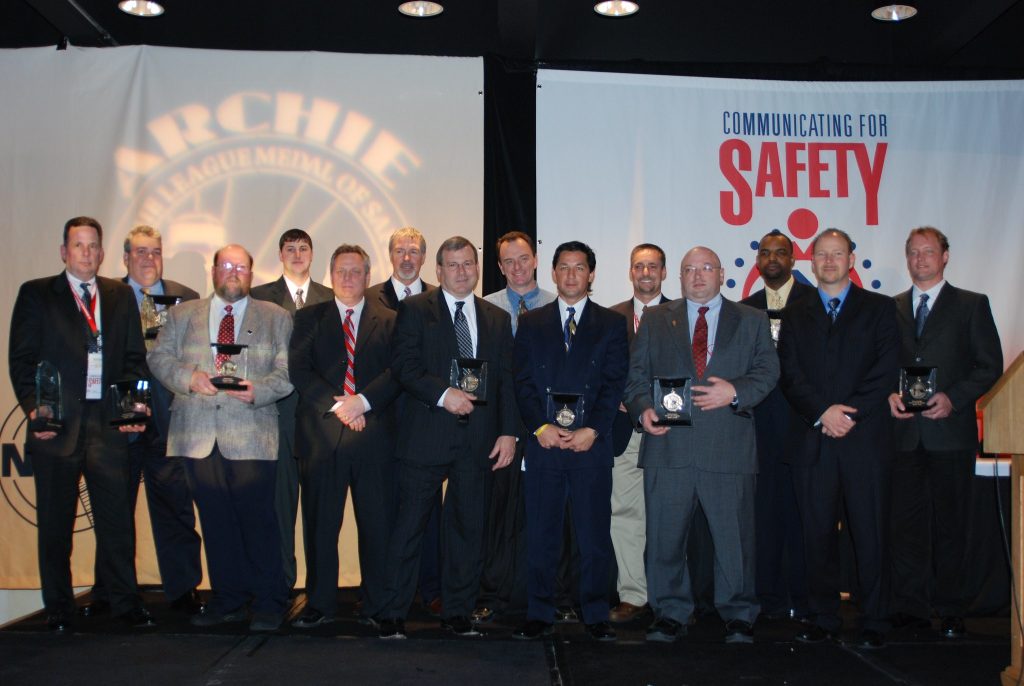
Alaskan Region: John Brown, Fairbanks Tower/TRACON
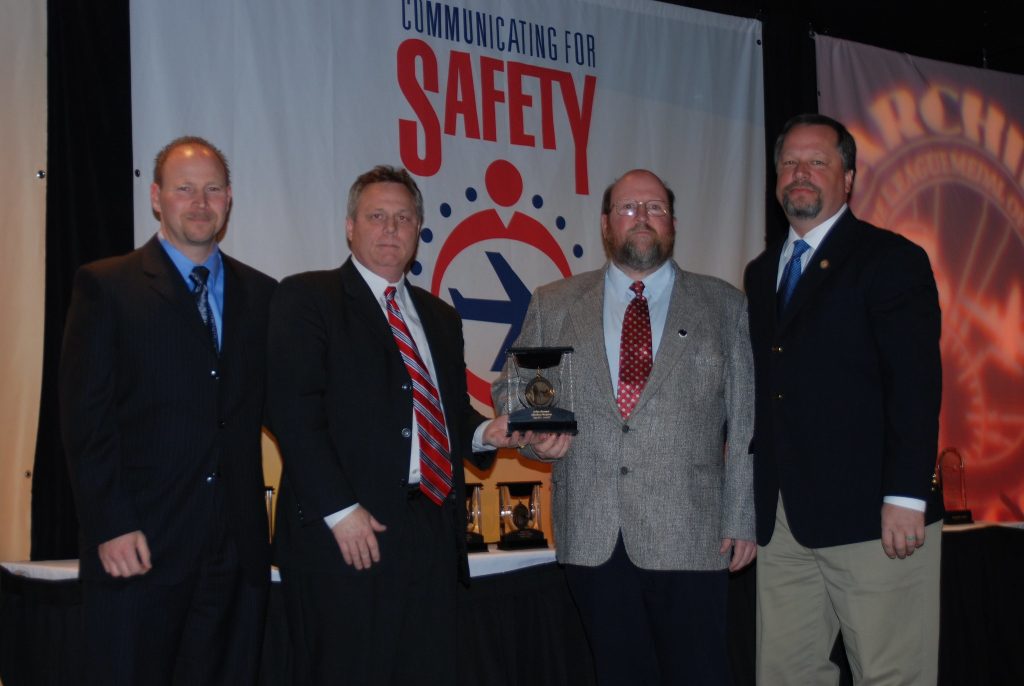
On August 13, 2007, Fairbanks Tower certified professional controller John Brown was in a briefing when he was notified of an emergency taking place in the Terminal Radar Approach Control room. Without skipping a beat, Brown rushed to offer his assistance. As a 20-year veteran of the Federal Aviation Administration, Brown was able to put all of his years of experience to use as he attempted to assist the pilot in need.
It was supposed to be an ordinary flight south to Fairbanks International Airport for the pilot of the PA-12, a Piper Super Cruiser, but a sustained headwind of 40-plus knots turned the routine flight into an emergency situation. The strong headwinds drastically decreased the amount of distance the plane was able to travel, which eventually prevented the pilot from being able to make it to Fairbanks due to a shortage of fuel. Making matters worse, the visual flight rules (VFR) pilot was flying on top of a thick layer of clouds.
As Brown was advised of the situation, the aircraft was switched to his frequency. Brown asked the pilot if he was capable of IFR flight. The pilot confirmed he was, but that he was not VOR equipped or capable of an ILS approach. With that in mind, Brown began to work with controllers in the Anchorage Air Route Traffic Control Center to help the pilot with headings to Livengood, an uncontrolled airport located 44 miles northwest of Fairbanks. At precisely this point, the aircraft descended below Fairbanks’ radar and radio coverage, eliminating all forms of direct communication with the pilot.
Hearing the situation over the radio, another aircraft in the area, a Wrights Flyer Caravan (WRF0ME), offered to help the pilot in need. The pilot of the Caravan was able to communicate with the PA-12 and pass along information from Brown. The pilot radioed to the Caravan that he had descended through the clouds and was searching for a place to land. With the help of the controllers at Anchorage Center, Brown was able to determine the aircraft’s location and suggested that the pilot should consider landing on the Steese Highway. With Brown issuing headings to the controller at Anchorage Center, who would pass along the headings to the Caravan, who would then pass along the headings to the PA-12, the pilot was able to safely land the aircraft on a gravel surface road near the Steese Highway, north of Fairbanks.
Even though Brown was unable to communicate directly with the pilot or even see the exact location of the aircraft on his radar screen, he was able to take the information he learned from the Anchorage Center controller and, using his knowledge and awareness of the general area, devise a flight path for the pilot to help bolster the chances of a safe landing.
Read transcript of event highlights.
Central Region: Jack Bowers and David Brown, St. Louis TRACON
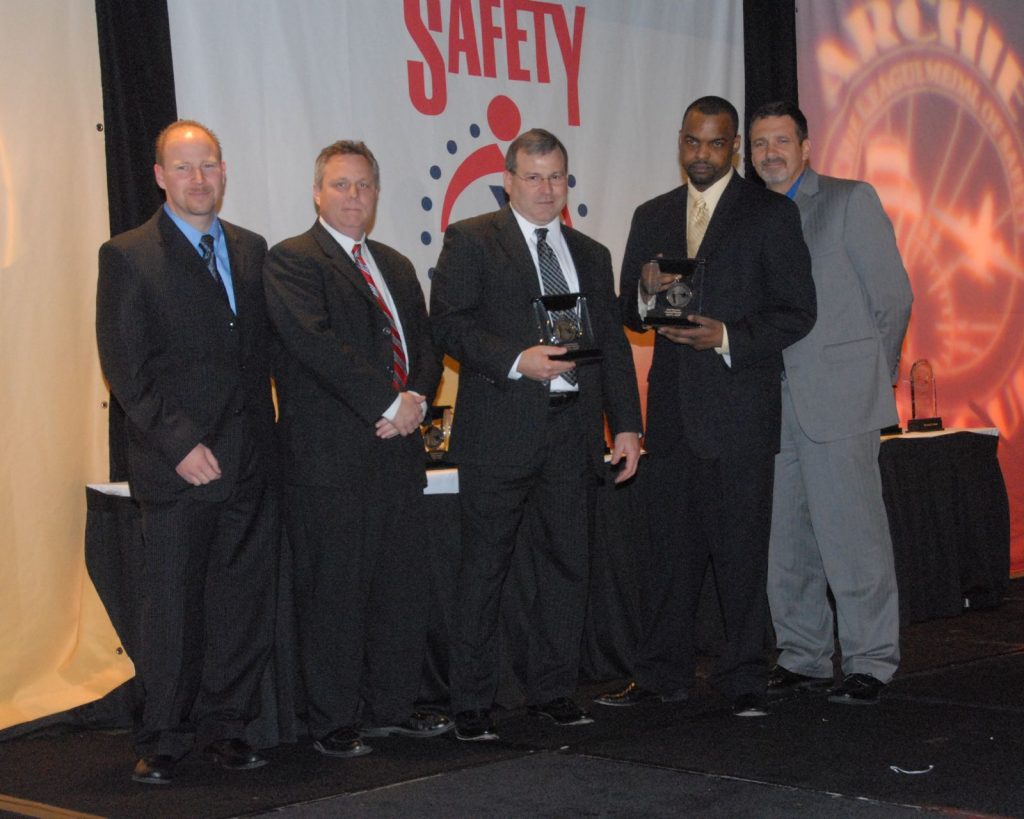
“I’m not having a good day.”
That’s what St. Louis TRACON air traffic controller David Brown heard from a pilot in the skies over St. Louis on Dec. 27, 2007.
The aircraft, a Cessna 182, was inbound to the Spirit of St. Louis Airport (SUS) on a cloudy, overcast evening. It had accumulated a lot of ice during the initial descent into SUS, which proved to be an issue over the course of the next two hours as Brown and fellow air traffic controller Jack Bowers attempted to help the pilot land.
After a missed approach into SUS, and upon returning to Brown’s frequency, the pilot asked for assistance to attempt a second landing. But Brown was forced to cancel the approach clearance because the pilot was descending towards the runway too soon.
After turning the aircraft away from the airport, Brown calmly reassured the pilot he was going to continue to work with him and help him land. It was at this point that the pilot first indicated that he had ice on his aircraft, which was hampering his ability to connect with the ILS approach and safely climb.
Taking all the factors into consideration, Brown suggested the pilot head towards St. Louis Downtown Airport (CPS) where weather conditions were more favorable. The pilot agreed. At this point, Bowers – a certified flight instructor – took over for Brown and spent the next hour helping the pilot maneuver the aircraft for a safe landing.
Once the pilot was able to climb to 4,500 feet, he indicated the ice was beginning to melt. As the pilot was gathering himself, Bowers asked for weather conditions from other aircraft in the area and then discussed the conditions at all the local airports with the pilot to determine which airport they should attempt another landing. CPS still appeared to be the best option so Bowers issued the pilot new headings and altitudes.
On the first approach into CPS the aircraft was cleared to land, but the pilot had trouble locating the runway. That forced Bowers to issue a missed approach. A second approach also failed, setting up a third attempt. But the pilot still could not get a clear view of the ground or the runway and was once again forced to climb.
As the pilot was circling back around for a fourth attempt, Bowers received a notice indicating the weather at CPS had worsened. However, the weather at Scott Air Force Base, Mid America Airport (BLV), was much better and Bowers suggested the pilot should consider heading over there.
With the ice beginning to melt off his aircraft and his confidence returning, the pilot agreed with an empathic “We’re going to get it this time.”
He was right. The pilot was able to successfully land, bringing to a conclusion a few long hours of work by these St. Louis TRACON controllers.
The persistence and calm reassurances of the exceptional controllers that evening resulted in a safe and uneventful landing for a very thankful pilot.
Read the transcript of the event highlights.
Eastern Region: Christopher Foust, Baltimore Tower
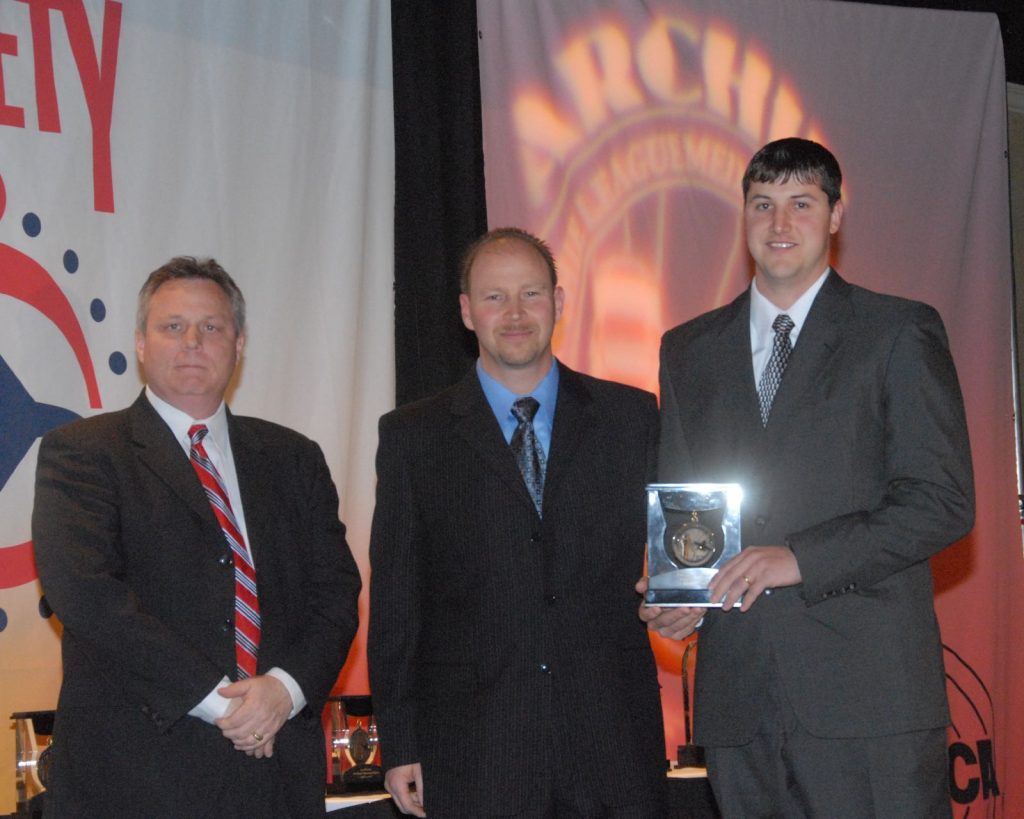
It had all the makings of a disaster. It was dark outside. The airport had multiple runways and taxiways – some running parallel to one another, some perpendicular. As darkness fell, the runway and taxiway lights were in full “on” mode for a nighttime operation. Even to a seasoned pilot, the sea of lights, runways, and taxiways can be confusing.
This was the situation on the night of December 18, 2007, at Baltimore Washington Thurgood Marshall International Airport (BWI) when air traffic controller Christopher Foust was working local control.
Standard configuration at BWI is to depart on Runway 28 and land on the intersecting Runway 33 Left. Runway 33 Right is also in use for small prop/corporate jets.
At approximately 8:20 p.m. local time, Foust cleared a Citation 550 to taxi from the general aviation ramp, on the east side of the airport, to Runway 28 for departure.
As the Citation, N505RP, was taxiing to the runway the ground controller sent a Southwest Airlines Boeing 737 towards Runway 28 for departure. The B737 was traveling eastbound on Taxiway U (Uniform).
After clearing the Citation for departure off Runway 28, Foust continued to work other traffic, while continuously scanning the runways for any abnormal activity. As the B737 was headed eastbound up Taxiway U, Foust noticed that the Citation had become confused and had entered into a takeoff roll on Taxiway U instead of the parallel Runway 28. The Citation was headed straight towards the oncoming Southwest Airlines jet.
Foust reacted quickly, telling the Citation to hold his position and canceling the takeoff clearance. The pilot complied and a serious incident was averted.
An award presented to Foust by the Federal Aviation Administration read in part, “Due to Mr. Foust’s vigilance, attention to the operation, and quick action, a serious incident/accident was averted.”
NATCA BWI Facility Representative John Dunkerly concurred. “Christopher’s situational awareness, attention to detail, and quick reaction time facilitated his ability to cancel the takeoff clearance on the Citation, thereby preventing a serious incident/accident.”
View a transcript of event highlights.
Great Lakes Region: Patrick Eberhart, Detroit TRACON
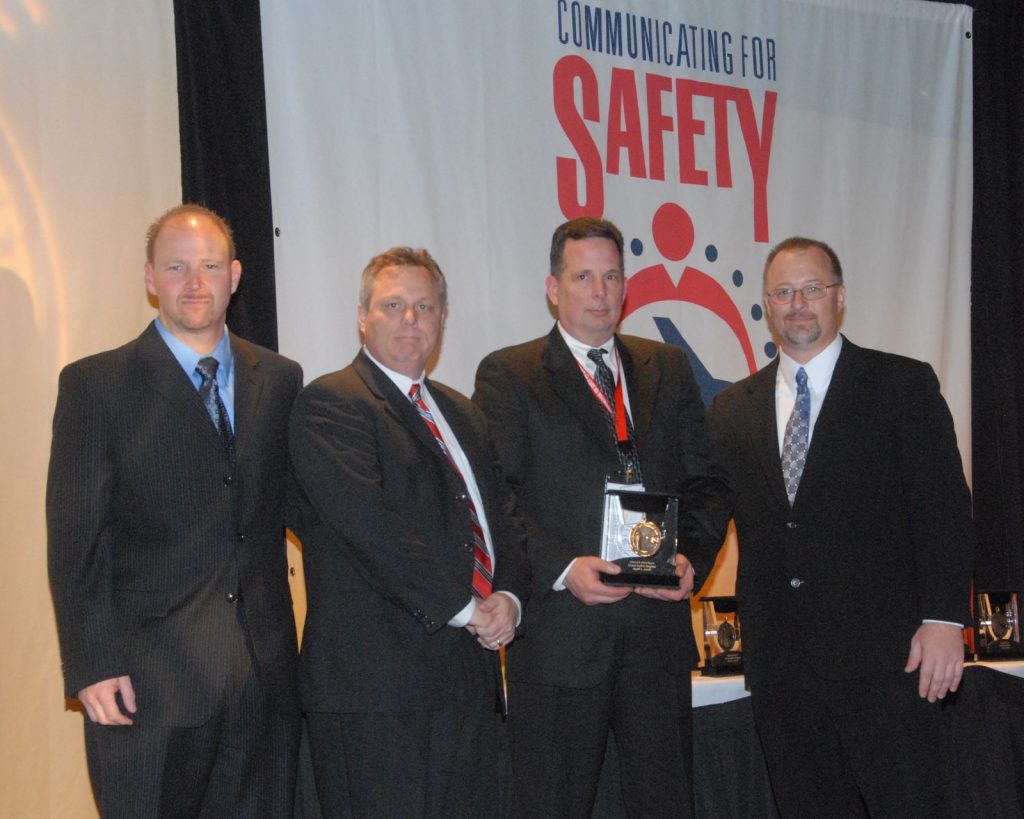
“This was without a doubt, an actual emergency. Our lives were in his hands.”
These were the words written by Ryun Black, the pilot of a Beech Bonanza that experienced an emergency on the night of Jan. 3, 2007, and was safely directed towards Pontiac (Mich.) Airport by Detroit TRACON controller Patrick Eberhart. “I want this controller to know that I will never forget what he did for us that night,” wrote Black.
The incident began when Eberhart noticed that the BE35 was off course on its initial approach into PTK. Eberhart coordinated with the Pontiac Tower to have the aircraft abandon the approach and he would vector him back around for another try.
Just as Black abandoned the approach, he radioed, “We’re critically low on fuel.” Eberhart heard the emergency call and immediately came on the frequency. Eberhart then confirmed with Black that he was declaring an emergency, and set about to vector Black towards PTK.
Black also informed Eberhart that his instruments were not working properly and that he would need vectors to the airport.
Eberhart slowly began to clear his radio frequency so he could focus all of his attention on the aircraft in distress.
Eberhart informed Black he would be issuing vectors to a surveillance radar approach to PTK, a procedure controllers in the Detroit TRACON have not used in over 10 years. But due to his experience as a controller and knowledge of the area, Eberhart felt he could safely vector the aircraft towards the runway.
As he was issuing the vectors, Eberhart noticed the pilot was not properly flying the assigned headings, which he attributed to the instrument outage on the aircraft. Because of this, Eberhart began to issue no-gyro vectors to the final, another skill that has not been used in the TRACON for over 10 years. In no-gyro vectors, the controller essentially tells the pilot when to start and stop a turn.
“[The controller] made it very simple by giving us start turn, stop turn vectors and eventually gave us an altitude that got us below the clouds with the runway in front of us – brightly lit,” Black reported in his letter.
Thirteen minutes after the initial emergency call was issued, Black was able to successfully land the aircraft at PTK.
“I am grateful for (Eberhart’s) swift action,” wrote Black. “He could tell from my voice that it was of vital importance to be expeditious and accurate.”
“Pat relied on a procedure that we haven’t used in over 10 years to get the aircraft on the ground,” stated Detroit TRACON NATCA Facility Representative Jeff Blow. “This is something only an experienced controller would know how to do.”
By relying on his experience and knowledge of the area, Eberhart was able to safely vector an aircraft critically low on fuel to a safe, uneventful landing at PTK. Just another day at the office.
Great Lakes Region: James Kmetz, Terre Haute Tower/TRACON
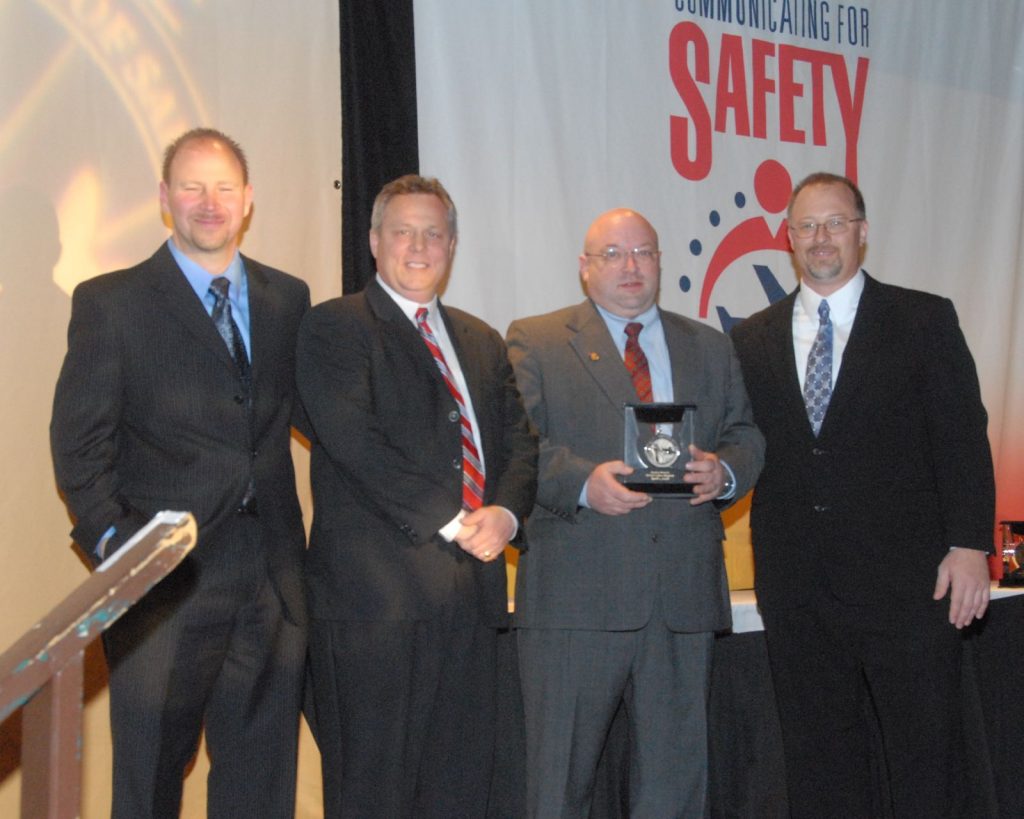
On the afternoon of Saturday, December 15, 2007, James Kmetz was working local control inside the Hulman Regional Airport Tower in Terre Haute, Ind. The Illinois-based pilot of a Cessna 182 – Ronald Wick – called and asked for clearance to descend to 2,400 feet due to icing in the area. Kmetz cleared the pilot to 2,400 and advised him of the worsening weather conditions with a recommendation to consider landing immediately.
Kmetz, a 23-year veteran controller, was forced to switch to a back-up radio to communicate with the pilot and began to vector him towards the ILS approach to Runway 5 at Hulman. While Kmetz was working to get him established on the localizer, the pilot began to descend without approval, dropping to 1,100 feet in an area where the safe Minimum Vectoring Altitude (MVA) was 2,200 feet. Kmetz urged the pilot to climb but Wick could not.
Kmetz began identifying obstacles that might be in the aircraft’s general vicinity. “Just to give you an idea of what’s around that area,” Kmetz said. “There’s a hospital up to the north of that area, and right ahead of you there may be some higher towers near the top of the hospital.” Kmetz also warned that “navigation is your responsibility here or climb and maintain 2,200.”
Kmetz continued to warn the pilot of the towers, indicating he did not know the exact heights. Just then, Wick acknowledged spotting one atop the hospital.
Kmetz continued to direct the pilot towards the airport, using landmarks on the ground, including a mall, gas stations, a McDonald’s restaurant, and multiple intersections.
Finally, the pilot spotted the runway and was cleared to land on Runway 5. The minute the aircraft touched down the pilot radioed, “We’ve got some problems here.”
Upon landing, the pilot lost control of the aircraft and the propeller struck the runway. Kmetz immediately sent crash and fire rescue equipment to the scene. Public Safety Officer G.D. Barnett, who had been listening to the radio communication between Kmetz and the pilot, responded to the emergency call and later wrote in a report of the incident the following: “The plane had a good amount of ice on it. The front vents were clogged, and all leading edges had rime ice on them. Needless to say, the 182 was not equipped for icing conditions.
“I believe that if it was not for Controller Kmetz’s actions and knowledge of the areas, those people would have died somewhere over the south end of Terre Haute, Indiana.”
Louis Becker, the Line Service Technician who also responded to the emergency call, wrote: “Damages (to the plane) included a crushed nose gear and wheel fairing, along with a propeller strike. As estimation, the aircraft had accumulated approximately 75 pounds of rime and clear ice. I consider the couple lucky to an extreme and I commend the air traffic controller for saving their lives.”
Upon exiting the aircraft, the pilot’s wife reported she thought they were “goners.” Only Kmetz’s expertise and knowledge of the area, including landmarks, prevented a tragedy from taking place.
Read a transcript of the event highlights.
New England Region: Steve Walsh, Burlington Tower/TRACON
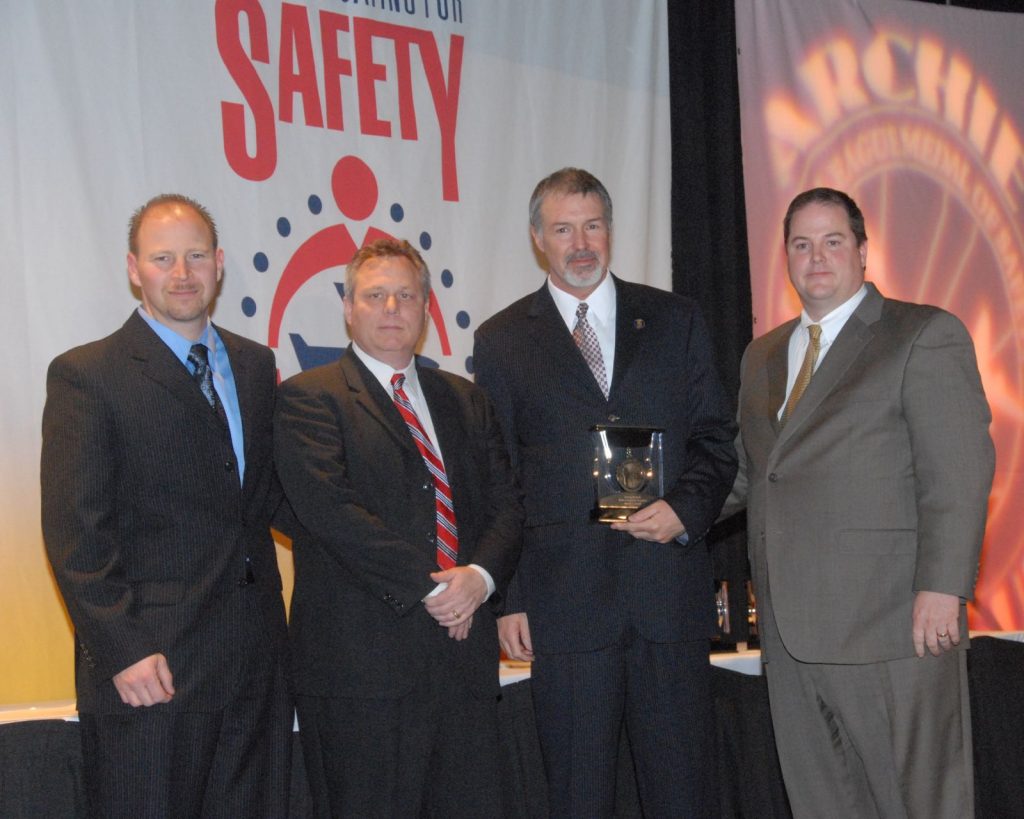
“I’m going to be alright. Thank God.”
Those were the words spoken by the pilot of a Cessna Skylane as he was just about to touch down at Plattsburgh International Airport on the evening of October 8, 2007. The pilot had spent the previous two hours navigating the overcast skies over New York with the help of veteran air traffic controller Steve Walsh. When the pilot finally felt solid ground again he let his emotions show for the first time all evening.
The adventure began when Walsh, working in the Burlington, Vt. TRACON, received the initial call: “I have a problem. I’m VFR trapped on top of this overcast at 6,800 feet.”
The visual flight rules pilot found himself stuck on top of the clouds when the weather worsened. In trouble and realizing he could not safely descend through the clouds on his own, the pilot radioed Walsh.
Walsh immediately asked the pilot if he was instrument equipped and rated, to which the pilot responded, “Instrument equipped, 50 percent towards instrument rating.”
Thus, in order for the pilot to land safely, Walsh either had to find a hole in the clouds for the pilot to descend through or would have to be the pilot’s eyes, carefully guiding him through the clouds towards an airport, keeping him safely away from obstacles and other aircraft.
At the moment of the initial call, the aircraft was 57 miles south of Burlington, where the pilot was hoping to land. The cloud cover over Burlington International Airport was 400 feet.
Walsh immediately went into action, calling other aircraft in the area to ask for weather reports and keeping an eye on the weather reports at all the other local airports, in order to determine which airport would be the best option for this pilot.
With three hours of fuel on board, Walsh knew the pilot had several options, including Burlington, Plattsburgh, Albany, and Ticonderoga airports.
At one point the pilot began a descent through a break in the clouds towards a lake he thought was Lake Champlain, only to find out he was actually headed toward Schroon Lake, a lake surrounded by mountains. Walsh encouraged the pilot to ascend to rejoin the pattern towards Burlington.
As the weather reports continued to roll in, Walsh indicated to the pilot that he believed Plattsburgh would be the best option, as the cloud cover was at 900 feet rather than the 400 feet at the favored Burlington Airport. The pilot agreed and Walsh issued headings to turn the pilot towards Plattsburg.
Once the aircraft was 15 miles from the airport, Walsh instructed the pilot to begin his descent into the clouds. According to Walsh, there were several eerie silences as he temporarily lost radio communication with the pilot as he descended. Thankfully, radio contact was never completely lost.
Approximately two hours after the initial call, the pilot was able to land safely in Plattsburgh, much to his and Walsh’s relief.
This save is another example of how an air traffic controller with local knowledge of the area can prove to be invaluable to a pilot in distress. This pilot was in need of reassurance that a local controller was going to get him safely through the clouds, which is exactly what Steve Walsh was able to do that evening.
Read a transcript of event highlights.
Northwest Mountain Region: Lee Wheeler, Salt Lake Center
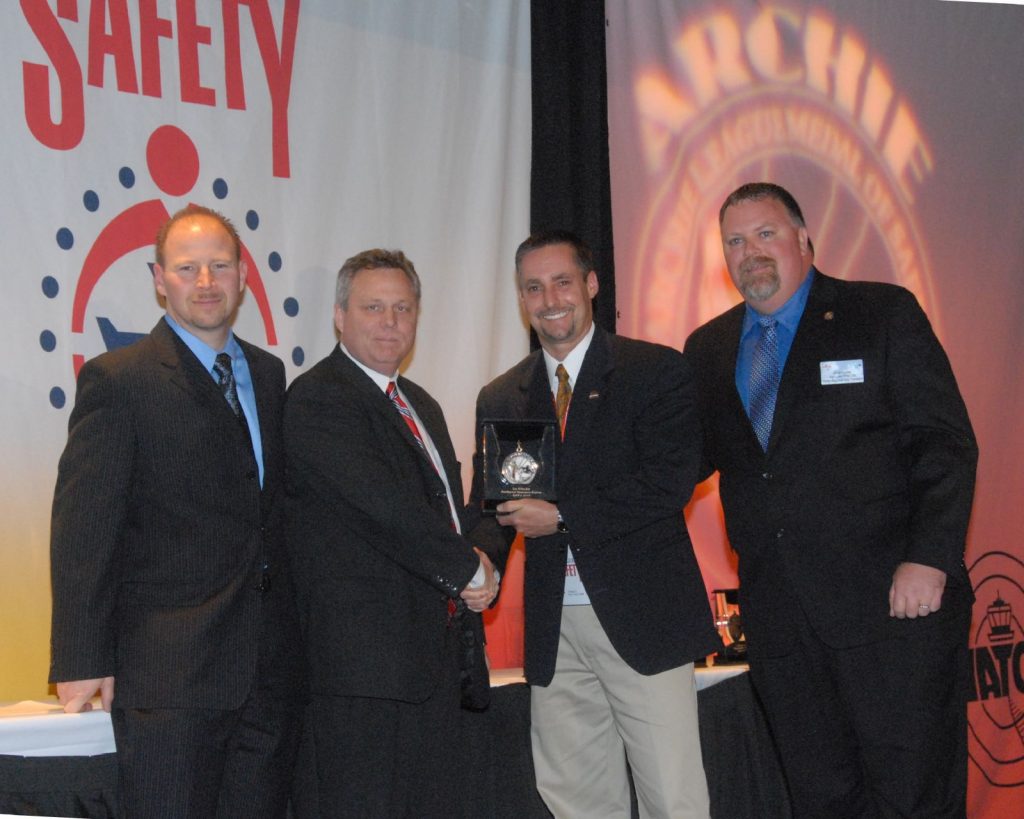
“Northwest 1273 thank you. Radar services terminated. You can contact Bozeman Tower at 118.2.”
“Ok, over to the tower at 118.2. Goodnight, Northwest 1273.”
With that very simple communication, Salt Lake Center air traffic controller Lee Wheeler transferred the radar services of Northwest 1273, an Airbus 320 inbound to Bozeman, Mont., from Minneapolis, to the tower at the Bozeman Airport (BZN) for landing.
Wheeler was also working a SkyWest jet into Bozeman and both aircraft had been holding for approximately 30 minutes due to weather. Once the weather cleared, Wheeler issued the approach clearance to NWA1273 and transferred radar services to the Bozeman tower.
Approaches into BZN are typically non-radar, due to the high terrain in the area that blocks the radar from picking up the aircraft’s signal. Without a signal, controllers are blind to the aircraft’s location. This was the case on February 19, 2007, as Wheeler did not have visual radar contact with NWA1273.
As the pilot of SKW4058 was waiting for his approach clearance into BZN, he indicated the weather had improved and he would be able to do a visual approach. However, without radar contact with NWA1273, Wheeler could not send SKW4058 into BZN, until he had verification from the tower at BZN as to NWA1273’s location.
Wheeler contacted Bozeman Tower, asking for the location of NWA1273. The BZN controller responded that he had the SkyWest in sight but not the Northwest.
At that point, Wheeler received a freak hit on his radar, indicating NWA1273 was really far off course. Wheeler then radioed BZN again stating, “I think that Northwest is confused on the approach. He is 35.5 miles northwest of the airport.”
Wheeler then asked the BZN controller to contact NWA1273, upon which the pilot responded by telling the controller to “standby one second.”
Upon hearing this, Wheeler immediately cancelled the approach clearance for NWA1273 and told the tower controller to tell the pilot to climb and maintain 11,000 feet immediately for terrain and that he had a low altitude alert.
Wheeler also reported the same message himself on the guard radio frequency in case the pilot was monitoring that frequency.
The BZN controller was successful in contacting the pilot and put the pilot back onto Wheeler’s frequency. Wheeler responded, “NW1273, Salt Lake Center has you radar contact. Low altitude alert. Climb and maintain 11,000 immediately. The terrain in your area is 10,800.”
Once the pilot reached 11,000 feet, Wheeler questioned the pilot as to what happened. “NWA1273, I don’t know where we messed up there sir, but you’re 36 miles from the airport, well beyond the parameters of the published profile on the approach.”
All the pilot said in response was “NW1273, roger.”
The pilot had found a very dangerous place. But Wheeler’s actions that night prevented a possible major accident involving a passenger jet. His persistence and attention to detail enabled him to locate the aircraft and make sure the aircraft remained at a safe altitude until he was safely on the ground in Bozeman.
Read transcript of event highlights.
Southern Region: David Rivero, Miami Center
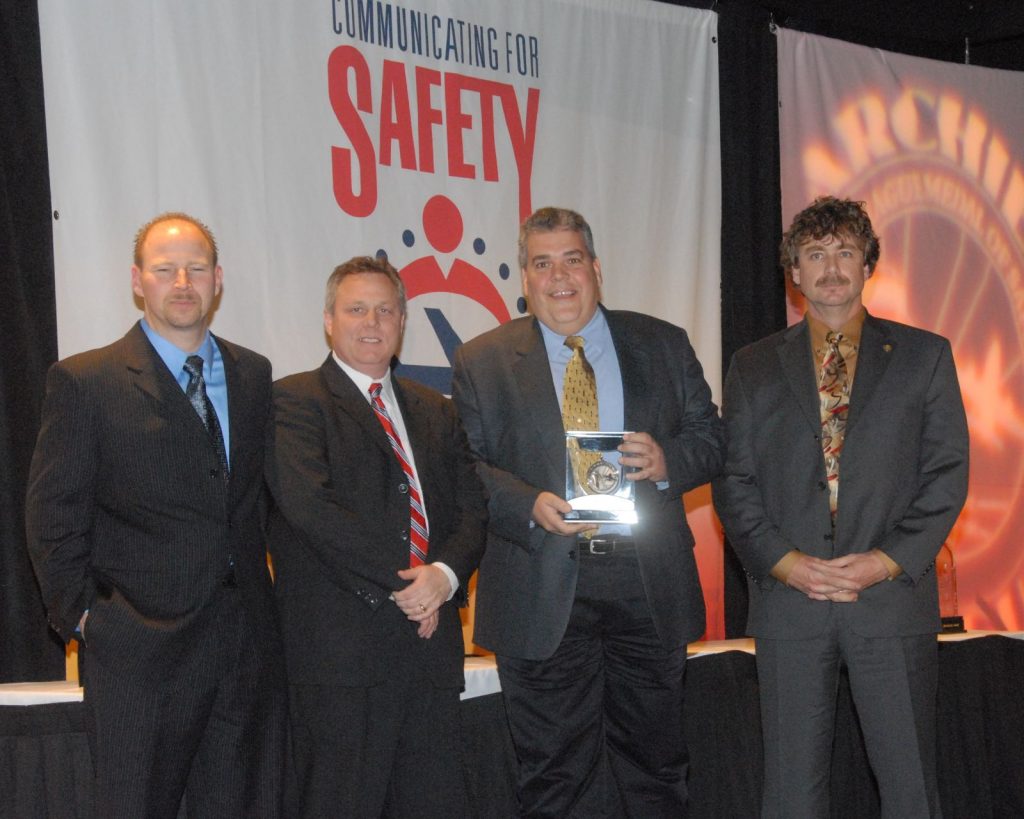
Each and every day, in the skies over South Florida, Miami Center controllers guide hundreds of aircraft safely through the airspace and towards their final destinations.
Along with the aircraft that are being worked by the controllers, there are other aircraft in the sky that are authorized to fly according to visual flight rules (VFR). These aircraft typically do not file a flight plan and are responsible for maintaining visible separation between themselves, the ground, and the other aircraft.
Controllers in the towers and centers have a radar target for the VFR aircraft on their radar screens, enabling them to see where the aircraft is, but the controllers are not in communication with the pilots. It is the responsibility of the controllers to monitor these targets and make sure the aircraft they are communicating with are aware of any VFR targets in their vicinity.
Miami Center controller David Rivero was working a busy sector in the afternoon of Dec. 7, 2006, when he noticed a VFR target in close proximity to an aircraft, N247AT, which he was in contact with. N247AT was traveling at 3,000 feet, heading towards Punta Gorda, Fla. Rivero radioed the pilot of N247AT, notifying him of the VFR traffic.
“7AT, VFR target twelve o’clock, two miles eastbound, shows 3,400 feet. He’s sort of fast moving. He’s probably going to go off your left side out there.”
The pilot of 7AT acknowledged the traffic.
Approximately 60 seconds later, Rivero noticed the VFR target had reversed course and was headed straight towards 7AT.
“7AT, that traffic turned back there. He’s at 3,000 feet and he’s just off your left wing. Do you see him?”
The pilot responded in the affirmative, that he had the traffic in sight and that he was going to climb above him. Rivero authorized the pilot to maneuver to avoid the target and then return to 3,000 feet once the traffic was cleared.
With the traffic cleared, the pilot radioed back to Rivero, “Ok, I’m heading back down. Thanks for that. I would’ve hit him.”
“I would’ve hit him.”
Strong, scary words straight out of the mouth of the pilot, but thanks to the careful observation of an experienced controller they were only words. Without this careful examination of the radar scope by Rivero, it is quite possible the two aircraft would have collided in mid-air, a sure catastrophe.
Controllers across the country face situations similar to this every day and due to their hard work, dedication and extraordinary ability to foresee any possible conflicts, the airspace above the United States remains the safest in the world.
View transcript of event highlights.
Southwest Region: Paul Hiel, Oklahoma City Tower/TRACON
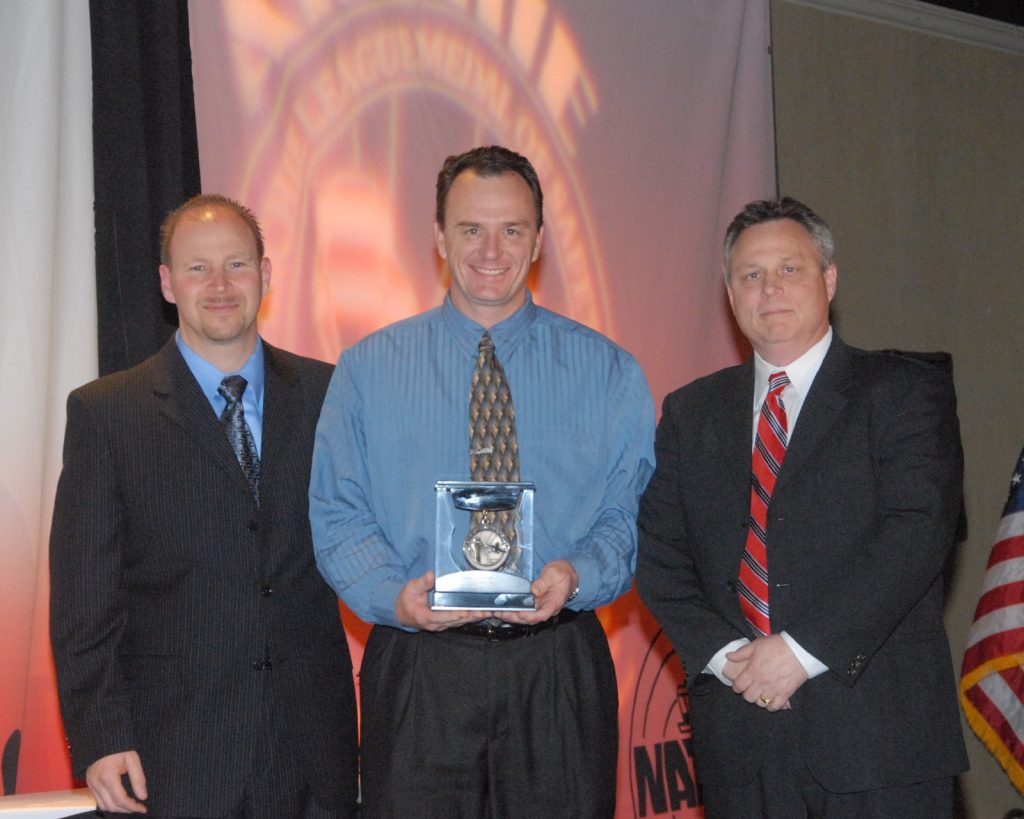
On April 10, 2007, Oklahoma City air traffic controller Paul Hiel was working the NE Radar position in the OKC TRACON when he heard several microphone key-ups on his frequency, but no voice modulation.
After hearing the key-ups a few times, Hiel acknowledged the noises and asked if there was an aircraft out there attempting to contact OKC Approach. When the mic keyed-up in response and with the day’s weather (low ceilings between 400-800 feet) Hiel responded, “If you need IFR services, click your mic twice.”
The unknown aircraft clicked the mic twice.
With that knowledge, Hiel asked the pilot to squawk 0303 in order to identify him on the radar. With his position known, Hiel set out to determine where the pilot wanted to land and to confirm he was requesting IFR services.
“Unknown aircraft, if you’re going to Will Rogers [International Airport], click your mic twice.”
No response.
“Unknown aircraft, are you just over flying or are you stuck on top? Unknown aircraft, if you’re stuck on top, click your mic twice.”
Two clicks.
“Unknown aircraft, are you wanting to land somewhere in the Oklahoma City area?”
Two clicks.
“Unknown aircraft, about the only place left is Norman [Westheimer Airport]. If you want to go to Norman, click your mic twice.”
Two clicks.
“Unknown aircraft, I just want to verify that you do want IFR into Norman. Click your mic twice.”
Two clicks.
Over the next 15 minutes, Hiel provided weather information for Norman, issued an IFR clearance to Norman, coordinated with other personnel in the radar room to vector the unknown aircraft to the ILS final approach course, and secured a landing clearance from the Norman ATCT – all without ever actually conversing with the pilot.
Once the unknown aircraft was established on the localizer and had been cleared to land, Hiel turned the aircraft over to the Norman tower for landing.
After the aircraft was safely on the ground, the pilot was able to contact Oklahoma City Approach and relay what had happened. The pilot, after departing Ada, Okla. (ADH), proceeded to climb his Beechcraft Bonanza 36 through a hole in the overcast skies, only to find himself stuck on top. Unable to descend on his own and realizing his radio was malfunctioning, the pilot turned his aircraft towards Oklahoma City hoping for the best.
“Fortunately for the pilot and his passenger, Paul Hiel was there to provide assistance,” said former NATCA Local OKC Facility Representative Jeff Cox. “Due to Paul’s dedication to safety and service to the flying public, his quick thinking and experience helped avert a very dangerous and possibly disastrous situation.”
Read transcript of event highlights.
Western Pacific Region: Bill Jacobs and Bruce Snoddy, Southern California TRACON
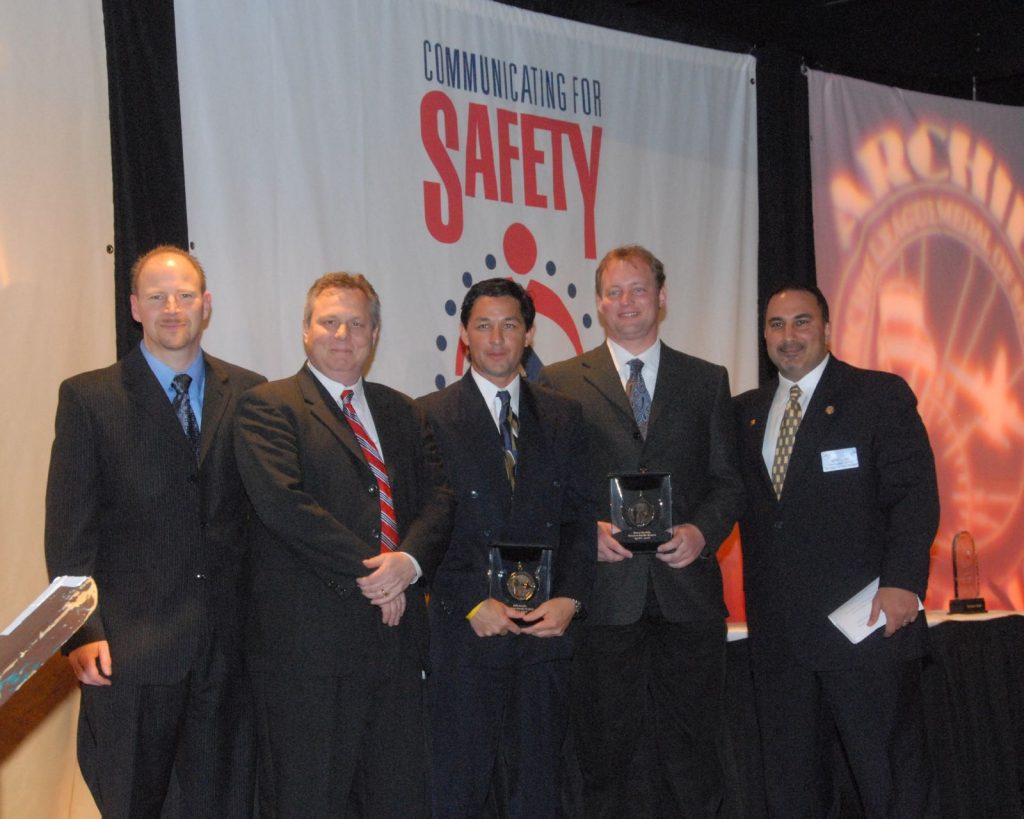
On the evening of Nov. 16, 2007, in the Southern California TRACON, controllers Bruce Snoddy and Bill Jacobs were busy working traffic into the Carlsbad Palomar Airport when they received a call on their frequency from a pilot asking for help. At first, the controllers were unable to determine the location of the aircraft, but after the pilot was able to squawk 7700, the controllers located it 20 miles northeast of Tijuana, Mexico. Snoddy immediately issued the lost pilot altitudes and headings to point her in the correct direction.
As Snoddy and Jacobs continued to work all the other traffic on their frequency, it became apparent that the lost pilot needed more attention. Jacobs decided to split off the frequency and open up a second one, where he would remain for the next hour, working to get the pilot safely to Gillespie Field.
Jacobs was able to vector the pilot directly towards Gillespie, but she could not locate the airport amongst all the other lights in the vicinity. Jacobs tried to help, saying, “the airport is just off your left side,” and “when you turn to the left, the airport is just behind you to the left.” This continued as the pilot circled the area, attempting to locate the runway lights.
The student pilot, who had already mentioned that her instructor was going to be upset with her for getting lost, started to apologize for not seeing the airport, “I don’t see the airport. I’m really sorry.”
After flying directly over the airport and being vectored back around for another attempt, Jacobs pointed out other landing aircraft in the vicinity in an effort to get the pilot to follow these aircraft towards the runway. But the pilot had trouble distinguishing the traffic heading towards Gillespie with other traffic in the air.
The pilot grew increasingly more upset as the time passed. Jacobs remained calm, encouraging the pilot to take her time and just fly the aircraft.
Finally, she spotted the runway. Jacobs asked if she was able to switch frequencies to talk with the tower, but she indicated she could not see anything in the cockpit, because it had gotten dark. The pilot remained on Jacobs’ frequency as she approached the runway for landing.
Unfortunately, her first attempt at landing was unsuccessful, so she went around for a second time. Jacobs then instructed her to, “Be calm, take you time, fly the airplane, and let me know when you get turned back around for the runway.”
After a few moments of silence the pilot was heard saying, “I finally landed this aircraft. Thank goodness.”
But the pilot was overcome with emotion and unable to taxi her aircraft. Jacobs attempted to help her off the runway, but she could not locate her parking area. Jacobs then encouraged her to pull off the runway onto a taxiway as he radioed the tower for help. Soon after, a truck appeared and was able to help the pilot taxi her aircraft. A potentially disastrous situation ended calmly and safely.
President’s Award: Patrick Eberhart, Detroit TRACON
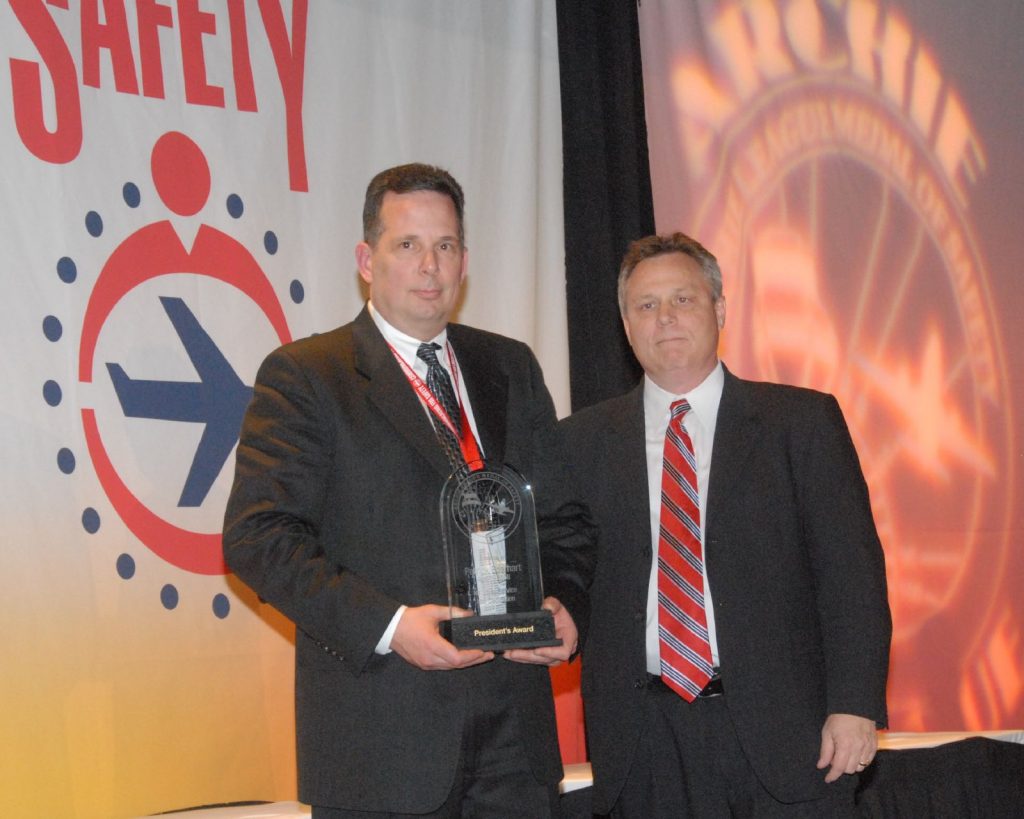
“This was without a doubt, an actual emergency. Our lives were in his hands.”
These were the words written by Ryun Black, the pilot of a Beech Bonanza that experienced an emergency on the night of Jan. 3, 2007, and was safely directed towards Pontiac (Mich.) Airport by Detroit TRACON controller Patrick Eberhart. “I want this controller to know that I will never forget what he did for us that night,” wrote Black.
The incident began when Eberhart noticed that the BE35 was off course on its initial approach into PTK. Eberhart coordinated with the Pontiac Tower to have the aircraft abandon the approach and he would vector him back around for another try.
Just as Black abandoned the approach, he radioed, “We’re critically low on fuel.” Eberhart heard the emergency call and immediately came on the frequency. Eberhart then confirmed with Black that he was declaring an emergency, and set about to vector Black towards PTK.
Black also informed Eberhart that his instruments were not working properly and that he would need vectors to the airport.
Eberhart slowly began to clear his radio frequency so he could focus all of his attention on the aircraft in distress.
Eberhart informed Black he would be issuing vectors to a surveillance radar approach to PTK, a procedure controllers in the Detroit TRACON have not used in over 10 years. But due to his experience as a controller and knowledge of the area, Eberhart felt he could safely vector the aircraft towards the runway.
As he was issuing the vectors, Eberhart noticed the pilot was not properly flying the assigned headings, which he attributed to the instrument outage on the aircraft. Because of this, Eberhart began to issue no-gyro vectors to the final, another skill that has not been used in the TRACON for over 10 years. In no-gyro vectors, the controller essentially tells the pilot when to start and stop a turn.
“[The controller] made it very simple by giving us start turn, stop turn vectors and eventually gave us an altitude that got us below the clouds with the runway in front of us – brightly lit,” Black reported in his letter.
Thirteen minutes after the initial emergency call was issued, Black was able to successfully land the aircraft at PTK.
“I am grateful for (Eberhart’s) swift action,” wrote Black. “He could tell from my voice that it was of vital importance to be expeditious and accurate.”
“Pat relied on a procedure that we haven’t used in over 10 years to get the aircraft on the ground,” stated Detroit TRACON NATCA Facility Representative Jeff Blow. “This is something only an experienced controller would know how to do.”
By relying on his experience and knowledge of the area, Eberhart was able to safely vector an aircraft critically low on fuel to a safe, uneventful landing at PTK. Just another day at the office.
BELOW: Watch the award presentation.
BELOW: Watch and listen to highlights from this save event.
Honorable Mention
Central Region
Tom Tierney, St. Louis TRACON (T75)
Mark Orr, St. Louis ATCT (STL)
Chris Thigpen, Kansas City Center (ZKC)
Eastern Region
Randy Trainor, Atlantic City ATCT (ACY)
Stephen Barringer, Atlantic City ATCT (ACY)
Timothy Puckett, Roanoke ATCT (ROA)
Edward Molloy, New York Center (ZNY)
Don Hunt, New York Center (ZNY)
Harrie Copeland, New York Center (ZNY)
Jeffrey Douglass, Charleston (WV) ATCT (CRW)
Great Lakes Region
Gregory Gorlich, Chicago O’Hare ATCT (ORD)
Xavier Gutierrez, Chicago O’Hare ATCT (ORD)
Micah Maziar, Toledo ATCT (TOL)
Ted Borchelt, Evansville ATCT (EVV)
Northwest Mountain Region
Robert Holt, Denver Center (ZDV)
Southern Region
Todd Hurta, Orlando-Sanford ATCT (SFB)
Tyrone Mercer, Atanta TRACON (A80)
Phil White, Atanta TRACON (A80)
Shane Ahern, West Palm Beach ATCT (PBI)
Pat Gancel, Pensacola TRACON (P31)
Bill Clark, Pensacola TRACON (P31)
Cheryl Plumeri, Cincinnati ATCT (CVG)
Lawrence Lee, Raleigh-Durham ATCT (RDU)
Thomas Lyens, Raleigh-Durham ATCT (RDU)
Southwest Region
Jeffrey Peace, Dallas-Ft. Worth ATCT (DFW)
Patrick Hable, Houston Center (ZHU)
Jeff Beasley, Amarillo ATCT (AMA)
Western Pacific Region
Ronda Schnoor, Falcon ATCT (FFZ)
Jim Bryant, Northern California TRACON (NCT)
Thomas Gurule, Honolulu ATCT (HCF)
Jill Hoffman, Honolulu ATCT (HCF)


